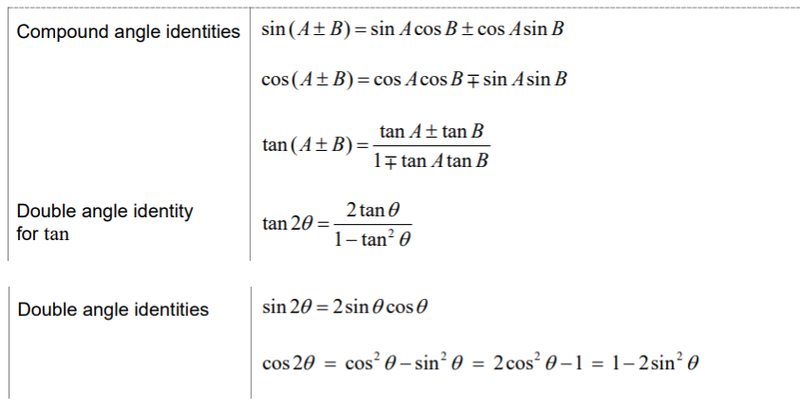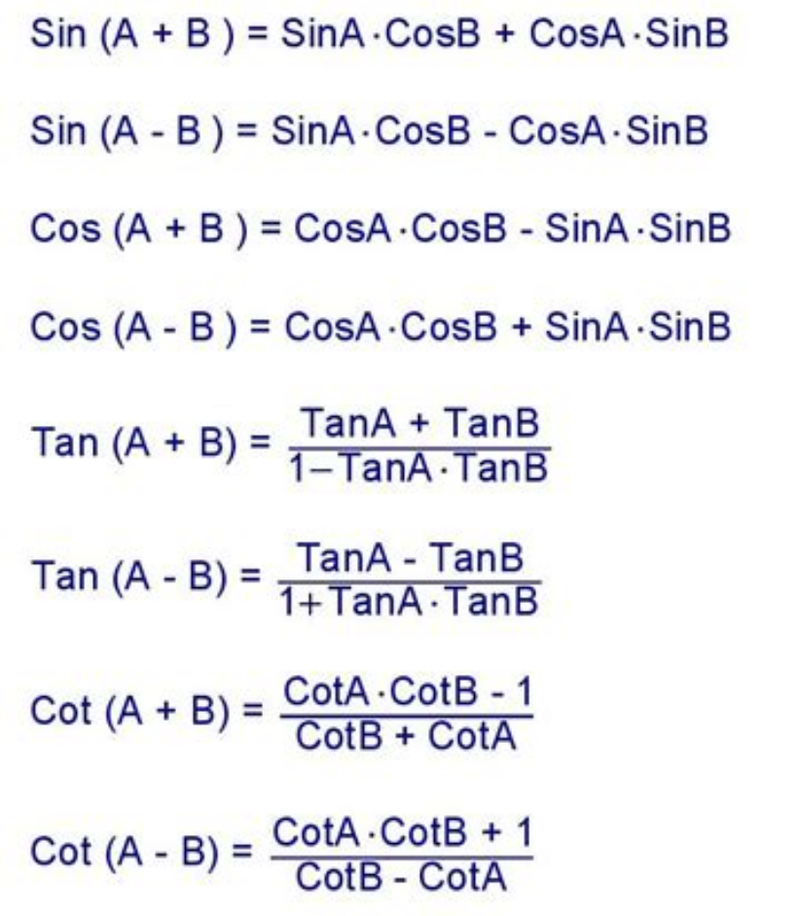What are Compound Angles?
- Any angle can be defined as a compound angle, which is the sum of two angles.
- For example sin(75°) = sin(30° + 45°).
- However, the trigonometric functions can be separated to find the individual values for the angles that make up the compound angle.
- Alternatively they can also be used to find

- Double angle identities are simply compound angles, but the two angles that make up the compound angle are the same.
- If you have more than two angles, such as sin(A + B + C) you can imagine it as just two and then use the second compound.
sin (A + B + C) = sin(A)cos(B+C) + cos(A)sin(B+C)
= sin(A)(cos(B)cos(C) - sin(B)sin(C)) + cos(A)(sin(B)cos(C) + cos(B)sin(C))
Additional Compound Identities

Sources